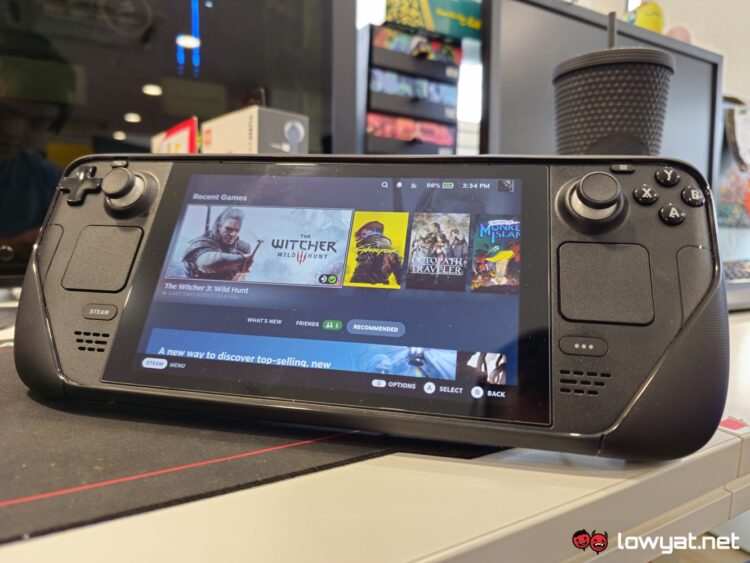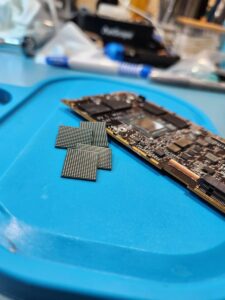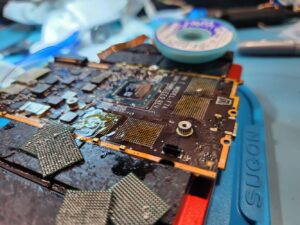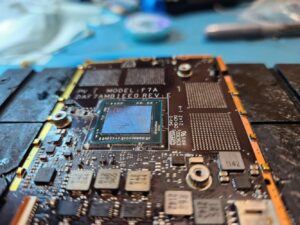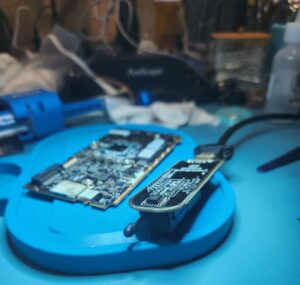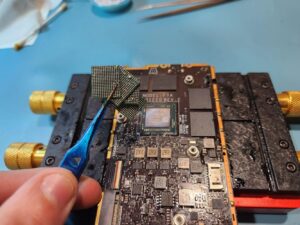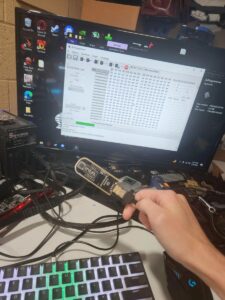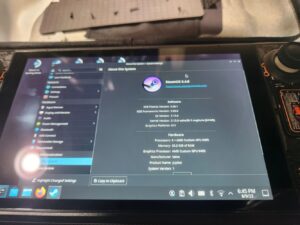Whatever you make of it, Valve’s Steam Deck is undoubtedly and currently one of the leading handheld gaming devices around the world, its official availability notwithstanding. Unlike the majority of other handheld gaming consoles, one of the Deck’s appeal is how its parent company practically allowed the modding community to have at it.
And while we’ve seen several modders push the physical limits of just how far you can modify the Steam Deck – Linus Tech Tips’ modifications to the console is, in this case, one such prime example – one modder took his Deck modifications to another level by doubling its memory amount.
Today I did another #SteamDeck mod. Upgraded the memory to 32GB! Let's bring the upgrades to the next level! (Yes, I cleaned the flux off later.) pic.twitter.com/mHFMPLVqUI
— Balázs Triszka (@balika011) August 3, 2023
The modder who goes by the handle Balázs Triszka (@balika011) on the platform formerly known as Twitter, X, posted their achievement on the platform, followed by another post on the Steam Deck subreddit, under the handle u/TheRealTreezus. It’s clear that balika011 is an electrician of sort, or has some form of training in electrical engineering.
balika01 explains in replies on Twitter that the process isn’t difficult, provided you have the skills needed for Ball Grid Array (BGA) rework. Of course, they’re quick to point out that there are plenty of tutorials on YouTube on the subject, as well as BIOS patching, many of which are related to Macbook ram upgrades.
balika011’s attempt was, once again, a success, based on the screenshot showing that the Steam Deck and its board was registering 30.2GB RAM that was being shared. Again, balika011’s attempt isn’t something that the average Deck owner would be able to pull off, and we got to say that we have mad respect for them taking the risk in doing this.
At current, there are no benchmark results from balika011 and their modified Steam Deck, but in theory, the boost in memory capacity should boost the performance of the console’s custom chipset. As a quick refresher, the custom AMD APU, based on the chipmaker’s Zen2 CPU cores and RDNA2 GPU cores. Unlike discrete GPUs, integrated graphics cores benefit immensely from higher RAM capacities. Those performance benefits are increased further if said memory modules run at higher frequencies.
The one major sticking point with the Steam Deck, though, is that its internal components are now considered dated – The ASUS ROG Ally, for example, is powered by a custom Ryzen Z1 Extreme SoC that boasts the latest Zen4 and RDNA3 architecture, meaning that it provides better graphics and performance, albeit at the cost of power consumption. There are also Chinese handheld gaming consoles like the Ayaneo 1S and OneXPlayer 2, both of which offer 32GB and 64GB LPDDR5X RAM.

